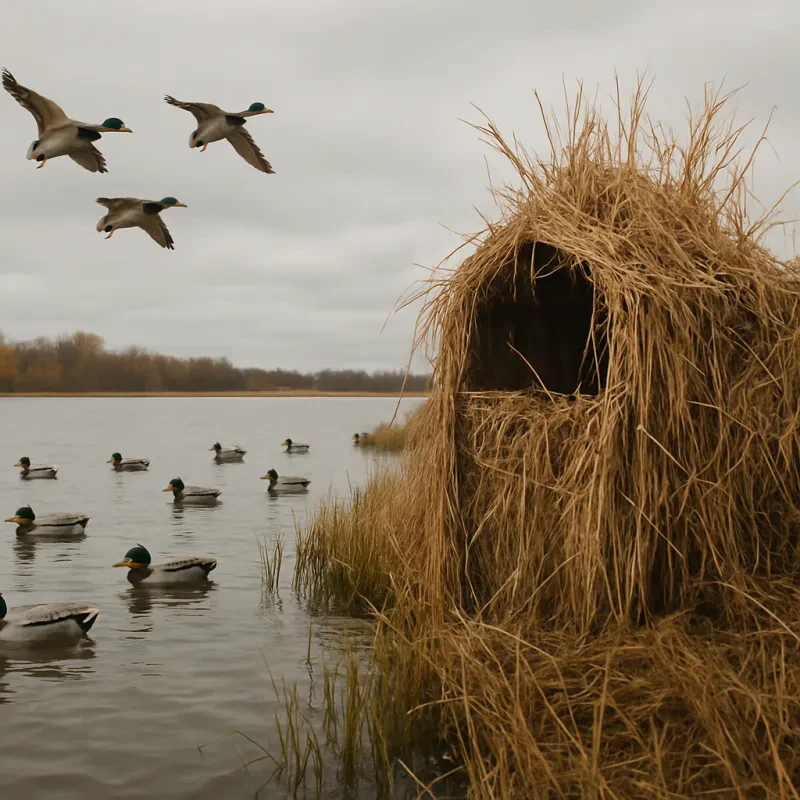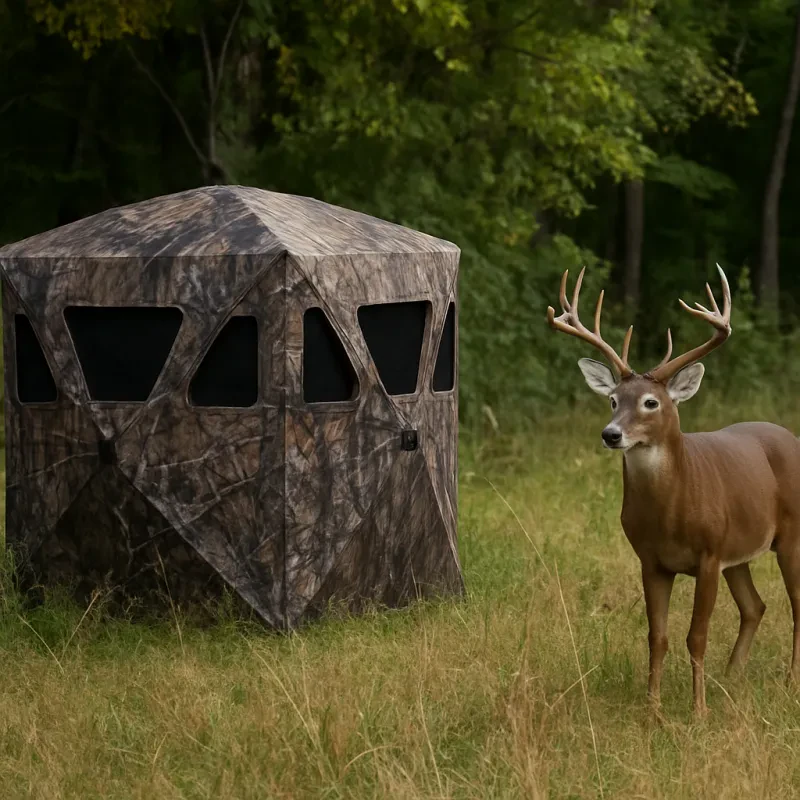When it comes to effective hunting, the first step is to choose the right location where you can blend in seamlessly with your surroundings. Look for areas that are rich in natural cover, like dense foliage, tall grasses, or near trees. These elements will not only help you hide your blind but also enhance your chances of encountering game. Remember, an open field or bare ground can make your hunting blind stand out, so prioritize locations with a natural backdrop.
Take some time to observe the movement patterns of wildlife in the area. This can give you valuable insights into where they are most likely to roam. Set up your blind in a spot that aligns with these patterns, such as near feeding or watering locations. Not only will this increase your chances of seeing game, but it will also help you camouflage your hunting blind effectively, making it less noticeable to the animals.
Don’t forget to consider the terrain and the direction of the wind when selecting a location. Animals have a keen sense of smell, and if they catch a whiff of something unnatural, they’ll likely steer clear of your blind. Position it downwind from where you expect the animals to come from. Additionally, using natural barriers like hills or brush can give you another layer of cover, enhancing your ability to camouflage your hunting blind.
Finally, think about the seasonal changes in vegetation. What looks good now might not in a few weeks. Choose a spot that will maintain adequate cover throughout the hunting season. This might mean scouting locations early and revisiting them as the foliage changes. By selecting the right location and taking these steps to camouflage your hunting blind, you’ll significantly improve your chances of success in the field.
Select Natural Materials for Concealment
When it comes to camouflage your hunting blind effectively, the choice of natural materials is crucial. Selecting materials that blend seamlessly with the surrounding environment will help you stay hidden from wildlife. For instance, branches, leaves, and grasses can be gathered from the area where you’re hunting. By choosing elements that closely resemble the local flora, you can create a more authentic look that animals won't easily recognize.
Consider using larger branches or logs to build the structure of your blind. These can provide a solid base while also mimicking the natural layout of the landscape. Layer these with smaller twigs and leafy branches to break up the outline of your blind. This layering technique not only aids in concealing your blind but also adds an organic feel that helps it blend into the background.
In addition to vegetation, you might want to incorporate mud or dirt into your design. By applying some local soil onto your blind, you can enhance its texture and make it look more like a part of the Earth. This method is particularly useful if your hunting location has a lot of browns and greens. Just remember to keep it natural; avoiding unnatural colors or materials is key when you want to camouflage your hunting blind successfully.
Finally, don't forget to consider the seasonal changes in your hunting area. As leaves fall or new growth occurs, be ready to adapt your camouflage accordingly. Regularly updating your blind with fresh natural materials will ensure that it remains inconspicuous throughout different seasons. By taking the time to choose and maintain the right materials, you can effectively camouflage your hunting blind and significantly increase your chances of a successful hunt.
Use Paint and Textures to Disguise
One of the most effective ways to camouflage your hunting blind is by using paint and various textures. By selecting the right colors and patterns, you can significantly reduce the visibility of your blind in the natural environment. Start with a base coat that matches the common colors found in your hunting area, such as greens, browns, or grays. This initial layer serves as the foundation for your camouflage efforts.
Next, consider adding layers of different textures and shades. Use a sponge or brush to apply various tones of paint and create a more organic look. For example, you might create a dappled effect, simulating the shadows and light seen in the surrounding foliage. This technique not only breaks up the solid color of your blind but also helps it blend seamlessly with the natural elements around it.
Incorporating natural materials is another great way to enhance your camouflage. You can attach branches, leaves, or grass to your hunting blind to mimic the surrounding habitat. Use a hot glue gun or wire to secure these items, making sure they appear as a natural extension of your environment. This step not only helps to camouflage your hunting blind but also adds depth and realism, making it even harder for wildlife to detect.
Finally, don’t forget to maintain your camouflage over time. Natural elements can wear out or fade, so it’s important to periodically check and refresh the paint and textures of your hunting blind. By taking these simple steps, you'll maximize your chances of staying hidden and enhance your hunting experience. Remember, the goal is to camouflage your hunting blind effectively, so make the effort to ensure it remains a part of the landscape.
Maintain Your Blind for Effective Camouflage
To effectively camouflage your hunting blind, it’s essential to maintain it regularly. Over time, natural materials like branches, leaves, and grass can wither and lose their color, making your blind more visible to wildlife. Check your camouflage frequently to ensure it blends seamlessly with the surrounding environment. If you notice any bare spots or faded areas, take the time to replace or refresh them.
One effective way to maintain your blind's camouflage is by adding local vegetation. Gather plants, twigs, and foliage that are specific to the area where you hunt. This not only improves the disguise of your blind but also helps it to blend in more effectively with the changing seasons. Remember to secure these materials well so they won’t blow away during windy days, ensuring your blind remains hidden.
In addition to adding natural elements, be mindful of the color and texture of your blind. If you’re using fabric, consider applying a spray-on camo pattern or a mix of earth-toned paints. This can give your blind a fresher, more authentic look. Always be cautious while applying any materials; you don’t want to create an unnatural appearance that could alert game animals.
Lastly, as you camouflage your hunting blind, consider the location and the angle from which animals will approach. Regularly adjust your camouflage efforts based on how the light changes throughout the day and how different weather conditions affect visibility. By staying on top of your blind’s appearance, you can effectively camouflage your hunting blind, making it a much more successful hunting spot.


